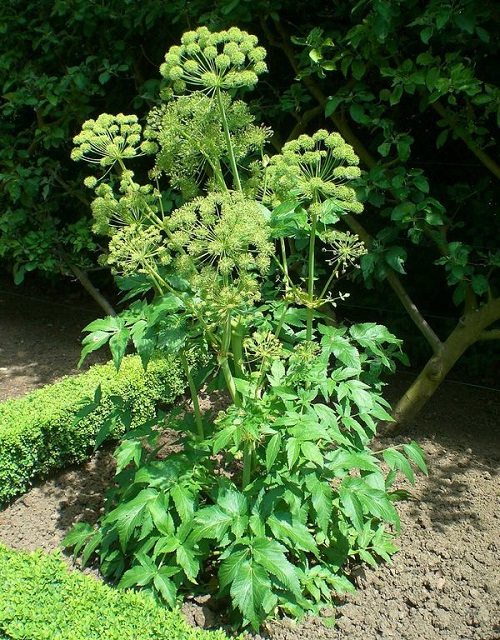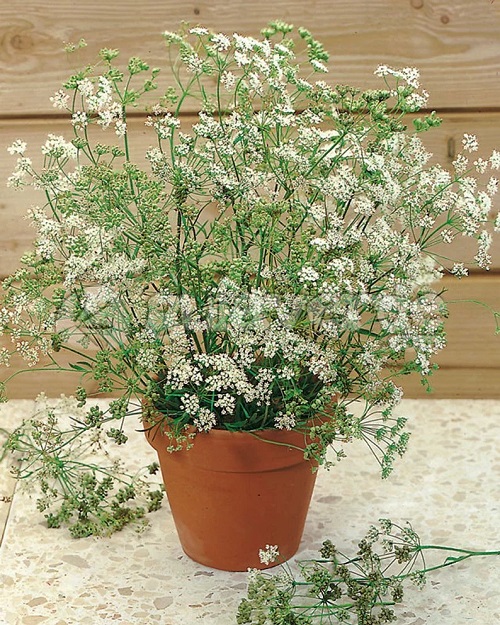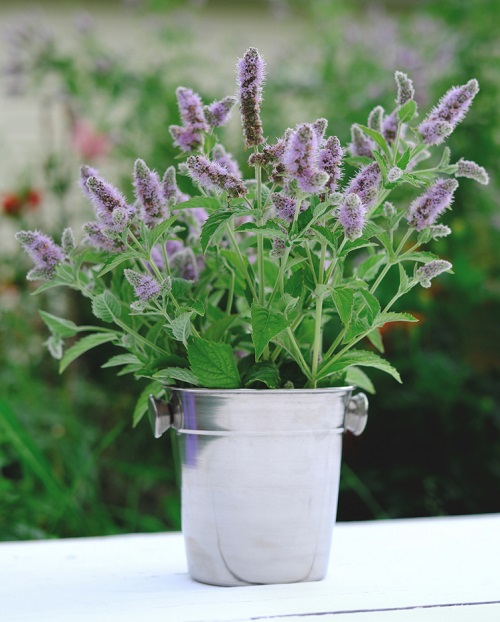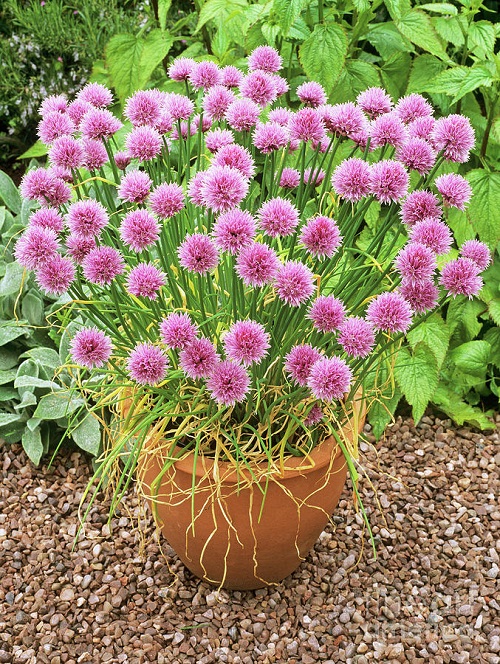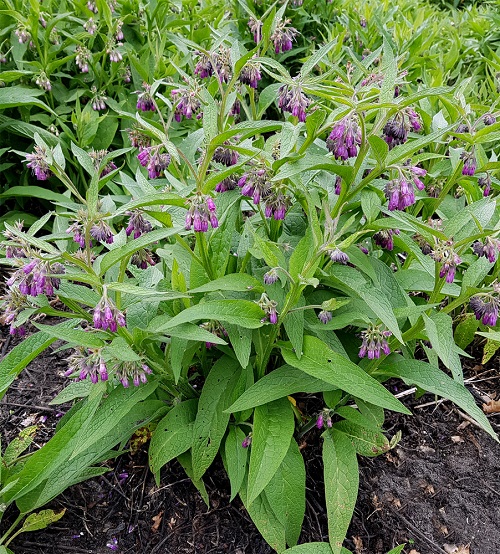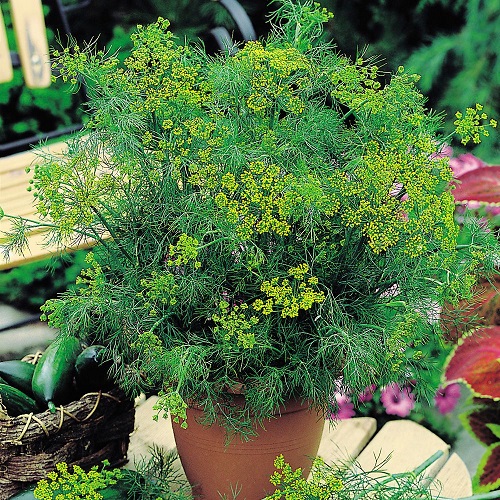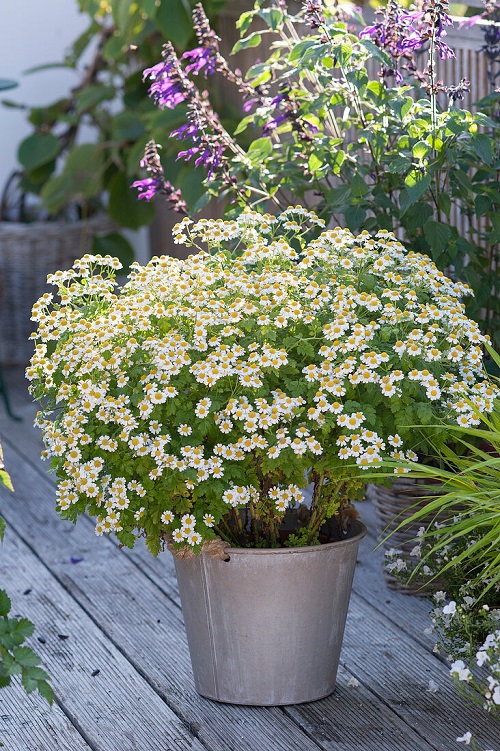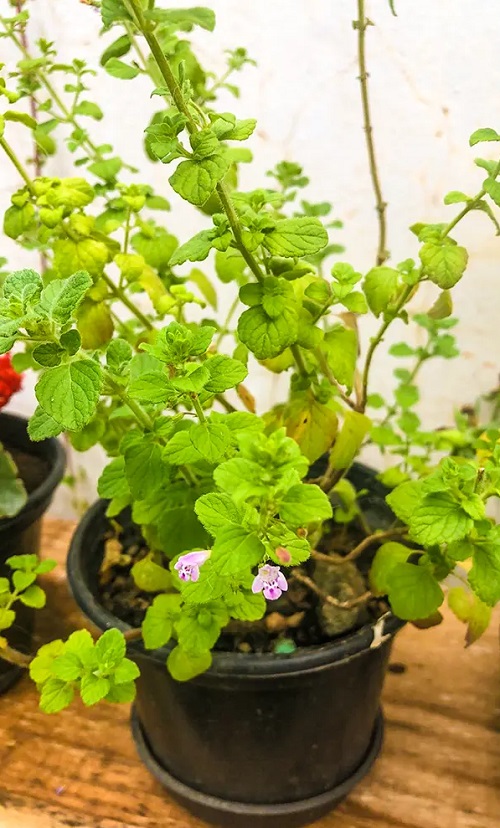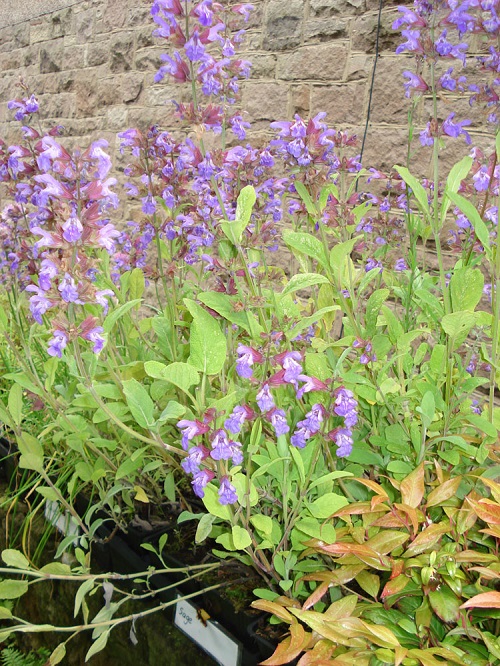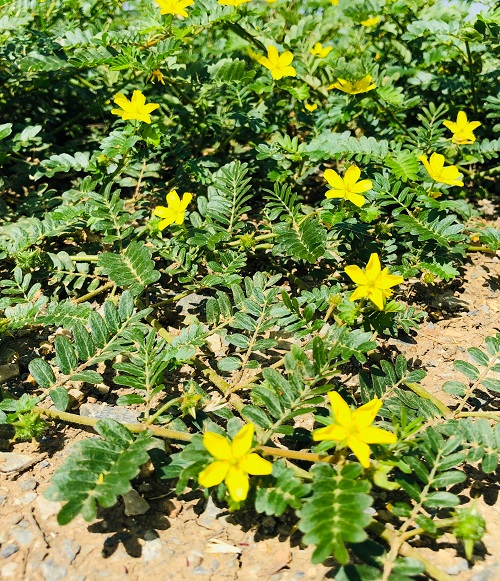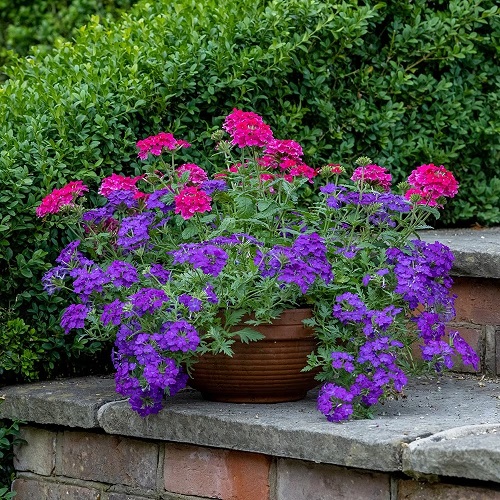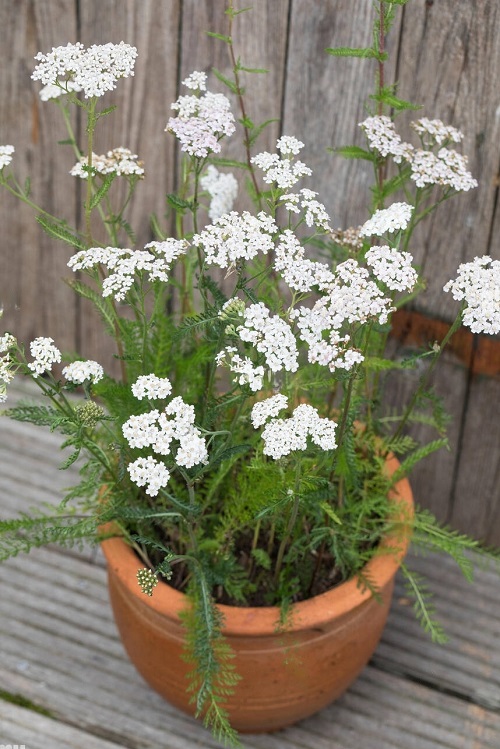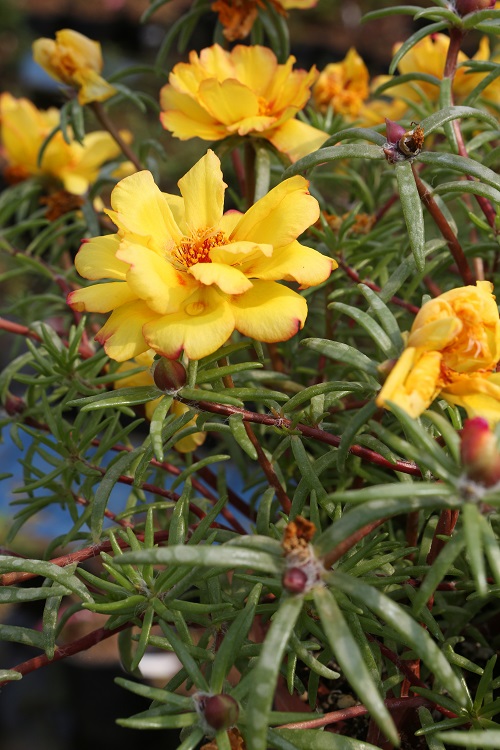In this article, we will be covering some Best Flowering Herbs that you can grow for both taste and colorful display!
Here are some of the Best Flowering Herbs you can grow in both pots and gardens for a vivid display of colors!
Check Here About How to Make a Balcony Herb Garden!
Best Flowering Herbs
1. Angelica
Botanical Name: Angelica archangelica
USDA Zones: 4-9
This flowering herb produces striking clusters of tiny greenish-white or pale pink flowers atop tall, sturdy stems.
Here is How to Grow Angelica
2. Anise
Botanical Name: Pimpinella anisum
USDA Zones: 4-11
The herb produces clusters of delicate white flowers that bloom in mid to late summer. The flowers also attract pollinators like bees and butterflies to your garden.
Learn How to Grow Star Anise here
3. Agastache
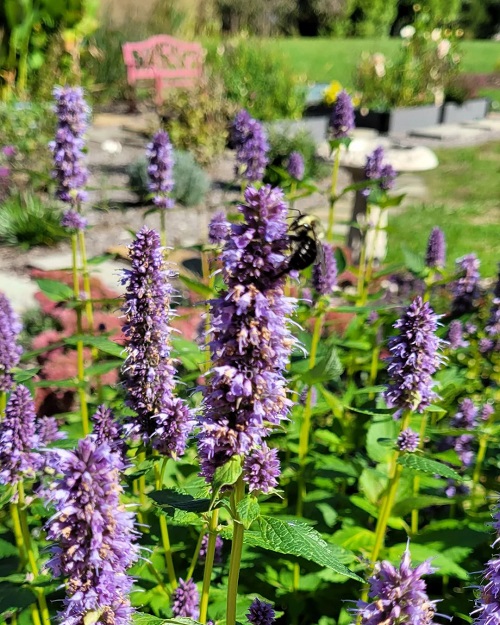
Botanical Name: Agastache foeniculum
USDA Zones: 4-10
Also known as hyssop or anise hyssop, Agastache produces spikes of small, tubular flowers in shades of pink, purple, and blue.
4. Asian Ginseng
Botanical Name: Panax ginseng
USDA Zones: 3-7
Asian ginseng, also known as Korean ginseng, is a popular flowering herb that grows to a height of about 2-3 feet, and produces small, greenish-yellow flowers.
Check out our article on growing Asian ginseng here
5. Bergamot / Bee Balm
Botanical Name: Monarda
USDA Zones: 4-9
This flowering herb gets its common name from its highly attractive flowers in shades of pink, purple, and red, which are beloved by bees and other pollinators.
Here is How to Grow Bee Balm
6. Borage
Botanical Name: Borago officinalis
USDA Zones: 2-11
This flowering herb produces stunning star-shaped flowers in shades of blue and pink. Borage flowers are highly attractive to bees and other pollinators.
7. Catnip
Botanical Name: Nepeta cataria
USDA Zones: 3-9
It grows small clusters of delicate, lavender-colored flowers that are highly attractive to cats (hence the name).
Here is A to Z of Growing Catnip Indoors
8. Chamomile
Botanical Name: Matricaria chamomilla
USDA Zones: 5-8
Another flowering herb that’s good for the mind and the soul, chamomile produces daisy-like flowers with white petals and yellow centers.
Check out Growing Chamomile in Pots here
9. Chives
Botanical Name: Allium schoenoprasum
USDA Zones: 3-10
Chives are a perennial herb that produces small, purple, or pink flowers in the late spring or early summer. The flowers are attractive to bees and butterflies.
Check out Growing Chives In Pots & Its Care here
10. Comfrey
Botanical Name: Symphytum officinale
USDA Zones: 4-9
Comfrey is a perennial herb that produces clusters of bell-shaped flowers in shades of blue, pink, or white.
11. Dill 
Botanical Name: Anethum graveolens
USDA Zones: 2-11
Dill is an annual herb that produces feathery green leaves and small yellow flowers in the summer. The flowers are attractive to beneficial insects such as bees and butterflies.
Here is Everything About Growing Dill in Pots
12. Dittany

Botanical Name: Origanum dictamnus
USDA Zones: 5-10
Dittany produces pink to purple-colored blossom that grows in clusters at the top of the plant’s stem. It typically blooms in the summer months.
13. Feverfew
Botanical Name: Tanacetum parthenium
USDA Zones: 5-8
This plant belongs to the daisy family, and it also produces flowers like daisy. You can grow feverfew from seed or purchase it as a plant.
14. Fish Mint

Botanical Name: Houttuynia cordata
USDA Zones: 3-8
The plant will begin to flower when it reaches maturity, usually after about 3-4 months of growth. It produces beautiful pink and white blooms.
15. Gentian
Botanical Name: Gentiana lutea L.
USDA Zones: 4-7
Gentian is a herbaceous perennial that is known for its vibrant blue flowers. It can be propagated from seed or purchased as a plant.
We have a great article on pruning herbs here
16. Germander
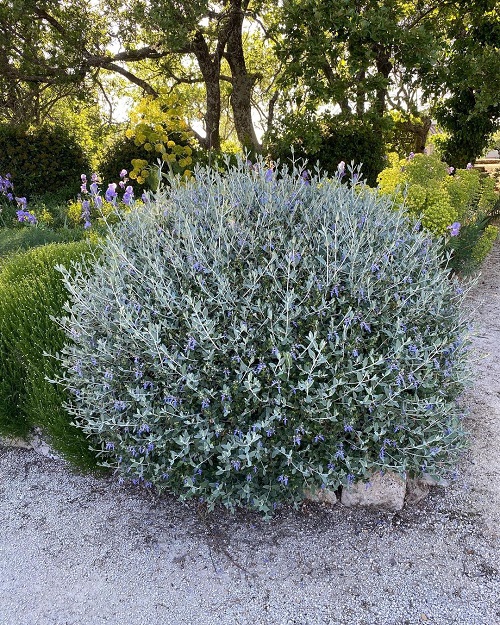
Botanical Name: Teucrium
USDA Zones: 5-9
Germander is a perennial shrub that produces purple-pink flowers. To care for the germander, water regularly and fertilize once a month during the growing season.
17. Hyssop
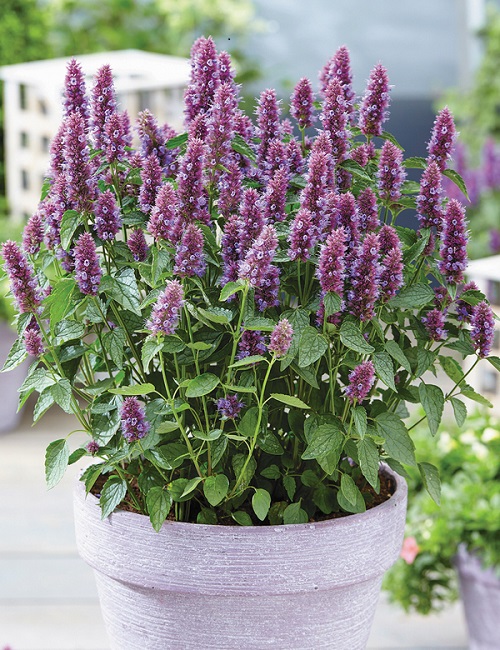
Botanical Name: Hyssopus officinalis
USDA Zones: 4-9
This flowering herb produces beautiful purple blooms in clusters. To grow hyssop, remember that it prefers full sun to partial shade and well-drained soil.
18. Lavender
Botanical Name: Lavandula angustifolia
USDA Zones: 5-10
We can’t talk about flowering herbs without mentioning the queen of them all: lavender. This herb produces stunning purple flowers that look great in any garden.
Learn all about How to Grow Lavender here!
19. Marjoram

Botanical Name: Origanum majorana
USDA Zones: 9-11
Marjoram, a popular perennial herb, is also known as sweet marjoram. This herb produces small, pink, or white flowers that bloom in late summer.
Here is the Ultimate Guide to Grow Marjoram in Pots
20. Mint
Botanical Name: Mentha
USDA Zones: 3-8
There are many different varieties of mint, all of which produce small, delicate flowers in shades of white, pink, and purple.
Want to grow Mint indoors? Get the best tips here
21. Jacob’s Ladder
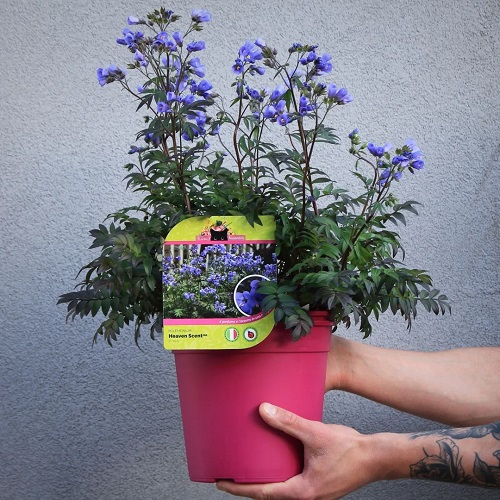
Botanical Name: Polemonium
USDA Zones: 3-8
This herb produces clusters of delicate, bell-shaped flowers in shades of blue, pink, and white. It is often grown for its ornamental value.
22. Rosemary
Botanical Name: Rosmarinus officinalis
USDA Zones: 6-9
Rosemary is another herb that’s as beautiful as it is delicious. This flowering herb produces small blue or purple flowers that look lovely against its fragrant green leaves.
Read more about rosemary here.
23. Sage
Botanical Name: Salvia officinalis
USDA Zones: 4-10
Sage is a staple herb in many kitchens, but did you know it also produces pretty purple-blue flowers? It’s true! Sage flowers are small but mighty!
Check out Growing Sage In Pots here
24. Salad Burnet
Botanical Name: Sanguisorba minor
USDA Zones: 4-8
This flowering herb produces clusters of small, red, or green flowers that bloom in late spring or early summer.
25. Thai Basil
Botanical Name: Ocimum basilicum var. thyrsiflora
USDA Zones: 4-11
Thai basil is a popular herb in Southeast Asian cuisine that has a sweet, licorice-like flavor. You can also enjoy its beautiful pink flowers along with its fragrance.
26. Thyme
Botanical Name: Thymus vulgaris
USDA Zones: 2-10
This herb produces tiny pink or purple flowers that are so pretty. Thyme is a popular herb not only for cuisines but for medicinal purposes too.
Learn Growing Thyme in Containers here
27. Tribulus
Botanical Name: Tribulus Terrestris
USDA Zones: 9-11
Tribulus is a flowering herb that is commonly used in traditional medicine systems like Ayurveda and Traditional Chinese Medicine. It produces spiny fruits and yellow flowers.
28. Vervain
Botanical Name: Verbena
USDA Zones: 8-11
This flowering herb produces clusters of small, delicate flowers in shades of pink, purple, and white. Verbena is loved for its striking beauty and its ability to attract pollinators.
29. Yarrow
Botanical Name: Achillea millefolium
USDA Zones: 3-9
This herb produces clusters of small, delicate flowers in shades of white, pink, and yellow. Yarrow is a member of the daisy family and is often grown for its ornamental value.
30. Holy Basil
Botanical Name: Ocimum tenuiflorum
USDA Zones: 8-12
Holy Basil flowers are typically small, with a variety of colors ranging from white to purple. The flowers are bilaterally symmetrical and have a tubular shape.
Check out Care and Growing Holy Basil here
31. Purslane
Botanical Name: Portulaca oleracea
USDA Zones: 9-11
Purslane flowers are typically small and can vary in color, including shades of yellow, pink, and sometimes white. The flowers have multiple petals and a prominent central cluster.

